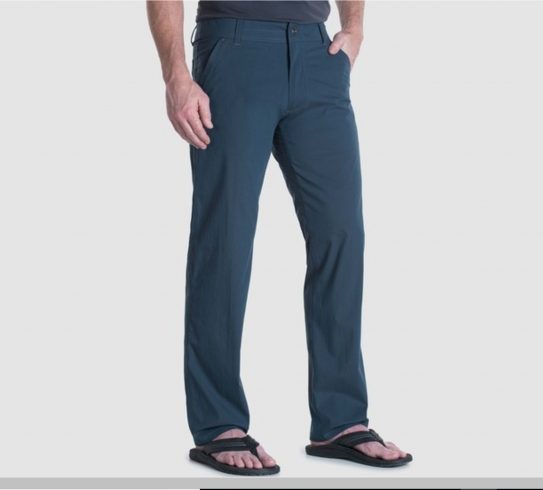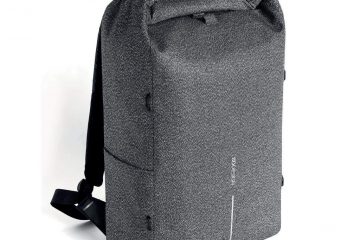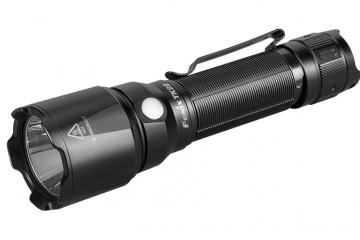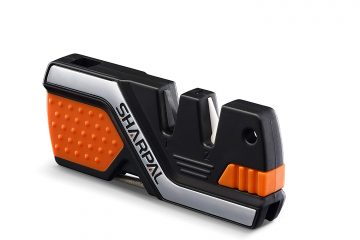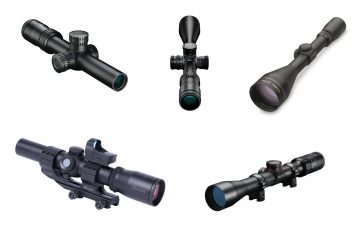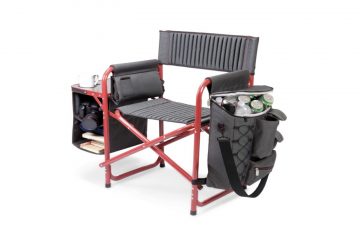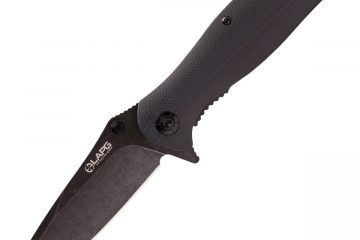There are a million other uses for fishing knives that might not even occur to you until you’re in the moment, at which point you’ll just be grateful that you came prepared. I have laid out guidelines on things to consider when purchasing a fishing knife, the types of knives, the best of the best, how to sharpen and maintain your fishing knife, and answer frequently asked questions about fishing knives. Let’s kick this off!
Contents
- Things to Consider When Picking Fishing Knives
- 1. Blade
- 2. Handle
- 3. Uses
- Types of Fishing Knives
- 1. Fillet Knives
- – Best fillet knive: Bubba Tapered Flex Fillet Knife
- 2. Fixed Blade Knives
- – best fixed blade knife : Morakniv Floating Blade
- 3. Manual Fold Pocket Knives
- – Best manual fold pocket knife: Smith & Wesson SWA25 Extreme Ops Folding Knife
- 7. Multi-functional Knife
- – Best multi-functional fishing knife: Case Yellow Fishing Pocket Knife
- Overall best saltwater fishing knife: Spyderco Salt 2
- FAQs
- – How do I sharpen a fishing knife?
- – How do I maintain my fishing knives?
- – Is it legal to carry a fishing knife?
- Final Thoughts
Things to Consider When Picking Fishing Knives
1. Blade
The blade in your saltwater fishing knife needs to be resistant to water and rust, or it won’t last long. Most anglers feel that the best fishing knives have quality stainless-steel blades.
Ideally, any fishing knife you use should have a razor-sharp blade that can maintain its edge for a while and not immediately rust from either salt water or fish guts and fluids. Many knives have corrosion-resistant blades but how well you maintain the knife is also a factor.
Blade length is also an important factor when considering which fishing knives to purchase or use in a certain situation. A fillet knife typically has a longer blade, typically 7 inches – 9 inches in length, while other, more versatile knives have much shorter and sturdier blades.
2. Handle
Aside from the blade of the knife, the handles are the next important factor to consider. The ideal handle for a fishing knife will be sturdy with a non-slip grip to avoid dangerous accidents.
[amazon box=”B09PQHPBM3″ template=”vertical” grid=”3”]The handle should also be durable and resistant to deterioration from constant exposure to water. It must also be hefty enough to be used to club a fish if necessary. Some good materials to consider when looking at knife handles are; rubber, hard plastic, cork, and treated wood.
3. Uses
The kind of knife that you need is also dependent on what you want to use the knife for. While virtually any knife can be used for anything in a pinch, some knives are just better suited to filleting fish or gutting fish.
Types of Fishing Knives
As I said, different fishing knives have different uses. While you can use some knives in a variety of ways, it’s best practice to just buy the appropriate knife for whatever activity you’re doing. You can ruin a fillet knife if you use it to cut rope, for example, so it’s best to avoid that and just be prepared.
If you don’t want to buy several knives, or if you can’t afford to, that’s also okay. There are affordable fishing knives that can serve several functions without breaking the bank.
1. Fillet Knives
A fillet knife is best used for what it sounds like; filleting fish! Unlike the other types of knives, this one is pretty specialized and not for versatile use. A fillet knife has a long, thin, curved, razor-sharp blade to make cleaner and more precise cuts when separating the fillets from the spine and ribs of the fish.
– Best fillet knive: Bubba Tapered Flex Fillet Knife
[amazon box=”B07YXC63ZL” template=”vertical” grid=”3”]This fillet knife comes with a sheath and features a 7 inch blade length on a stainless steel blade and a tapered non-slip grip as well as safety guards to prevent injuries from the blade and fish. It’s very lightweight at only 0.7lbs. The blade is Tri-Nitride coated, which makes it rust resistant, so this fillet knife will have a long life.
2. Fixed Blade Knives
Fixed blades are more durable than folding knives because the blade extends all the way into the handle. This makes them the perfect choice for dealing with larger fish as well as anything else that might need to be cut with minimal effort, like a rope. They can also be used for heavy-duty tasks around a campsite or boat.
However, these knives can be a little big and unwieldy. Most fixed blade knives will come with a sheath so that they can be stored and transported safely.
– best fixed blade knife : Morakniv Floating Blade
[amazon box=”B085R8HL9M” template=”vertical” grid=”3”]This brightly colored, Swedish, fixed blade knife is perfect to be used as a bait knife. Aside from being brightly colored, so it’s easy to spot, it also features a cork handle, so it floats and is easy to grip. The 1.4mm thick blade is made from recycled Swedish stainless steel and should remain sharp for a very long time, a great feature to have in your bait knives. The knife also comes with a sleek sheath that comes with a clip so you can securely fasten it to your pocket or bag.
3. Manual Fold Pocket Knives
Fishing pocket knives are a very nifty thing to have on hand in a number of everyday scenarios, and that’s no different in a fishing situation. These knives are great in a variety of fishing and camping situations, and if you pick a good one, you’ll have a very useful, sharp, and versatile knife. These knives can be safely kept in a pocket because the blade folds into the handle.
Their small size means that they’re fairly easy to handle and can be used with one hand without fear of injury. You can use it as a bait knife or to cut your line, and it’s most ideal for dealing with smaller fish and smaller bodies of water.
– Best manual fold pocket knife: Smith & Wesson SWA25 Extreme Ops Folding Knife
[amazon box=”B07HL7DRFR” template=”vertical” grid=”3”]This sturdy folding knife has the benefit of having a great brand behind it as well as a liner lock to stop the blade from slipping. It’s 7.8 inches long when fully extended, with a blade length of 3.3 inches, and it weighs 2.3oz. The handle is rubber-coated aluminum, and the blade is black oxide stainless steel; both are black in color. It features a clip and a lanyard hole to provide multiple ways of transporting it safely.
7. Multi-functional Knife
This may be the best kind of knife to buy if you’re working under budget constraints, as it can do most of the things that you need. A multi-functional knife is kind of like a fishing pocket knife but for fishing. You can use this knife to do several things, and it’s very portable and safe to use.
– Best multi-functional fishing knife: Case Yellow Fishing Pocket Knife
[amazon box=”B0002VIHRA” template=”vertical” grid=”3”]This is also, technically, a folding knife! This might be the best fishing knife for you if you don’t have a lot of space or money to spare. It features a yellow synthetic handle, so it’s easy to spot. A long clip blade and a sharpening stone as well as a scaler and hook disgorger are included. It’s 4.25 inches long when it’s closed and only weighs 2.7 ounces, so it’s easy to carry around. The blade is made from Tru-Sharp surgical stainless steel; it holds the blade’s edge for a long time and is also corrosion-resistant.
Overall best saltwater fishing knife: Spyderco Salt 2
[amazon box=”B00299RY5E” template=”vertical” grid=”3”]This is widely regarded as the best fishing knife for saltwater, and it’s also a folding knife. Every part of this pocket knife is resistant to corrosion from salt water which makes it the ideal knife for fishing and diving.
The 3-inch blade is made from H1 steel, while all other metal components are made of special non-rusting alloy metal. The handle is brightly colored, textured, and made from fiberglass-reinforced nylon to make it non-slip.
Overall, the knife is 7.25 inches in length and features a 0.55mm diameter hole in the blade to allow you to open it with one hand, as well as a back lock to secure the blade when opened.
FAQs
– How do I sharpen a fishing knife?
You can easily ruin your best fishing knife or fillet knife by sharpening it the wrong way. Ideally, your blade will hold its edge so well that you won’t have to do this, but there are several methods you can use; using a whetstone, using an oil stone, or honing your knife regularly.
There are lots of helpful videos online that you can watch to make sure you’re using the right technique and not actually making it worse.
– How do I maintain my fishing knives?
It’s important to clean your fishing knives regularly to avoid deterioration. It’s advised that you wash your knives after every fishing excursion in warm, soapy water and then thoroughly dry them afterward so that they’re not exposed to water for unnecessary amounts of time.
– Is it legal to carry a fishing knife?
This varies from state to state, so it’s best to familiarize yourself with your local laws and your state laws. There might also be laws on how to carry your knives openly.
Final Thoughts
There is a wide range of knives and brands for you to choose from, but knowing what kind of knife you need and why you need it will help you easily choose the right fishing knife for your next trip.

